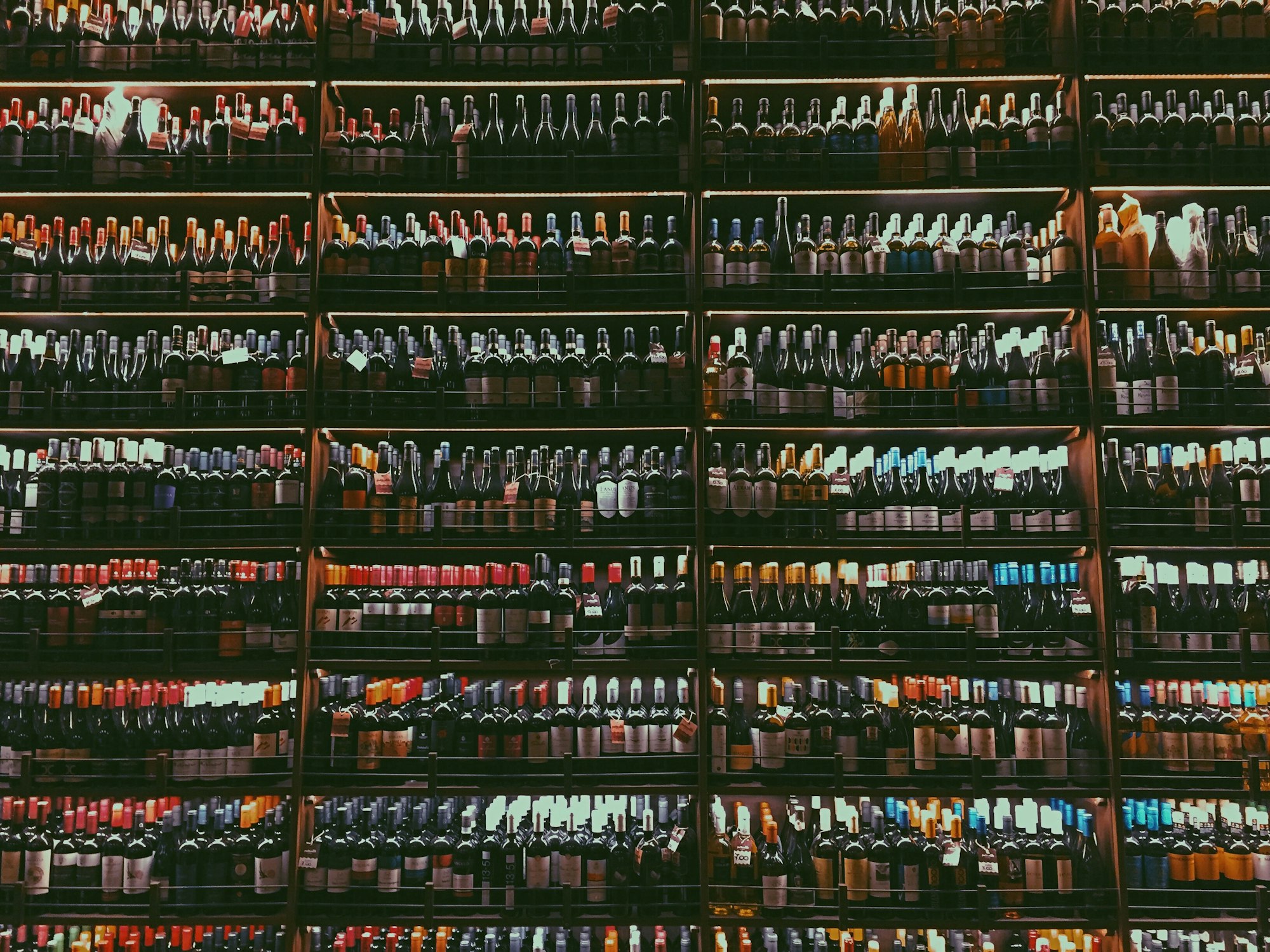Wine is a popular alcoholic beverage that is enjoyed by many people around the world. It is made from fermented grapes and comes in a variety of types, including red, white, and rosé. One aspect that wine enthusiasts often consider is the alcohol content in wine.
Alcohol content in wine can vary depending on the type of wine and the winemaker's desired ABV. According to several sources, the average alcohol content in wine is around 12%. However, bottles can range from as little as 5.5% ABV to as much as around 20% ABV. When tasting wine, one can often notice the alcohol coming through as heat in the back of the mouth or throat. Understanding the alcohol content in wine can help individuals make informed decisions about their drinking habits and how much wine they consume.
It is important to note that the alcohol content in wine can have different effects on individuals, depending on factors such as weight, gender, and tolerance. It is recommended that individuals drink wine in moderation and be aware of their personal limits. In the next section, we will explore more about the different types of wine and their alcohol content.
Understanding Alcohol Content in Wine
Wine is an alcoholic beverage made from fermented grapes. One of the most important aspects of wine is its alcohol content, which is usually expressed as a percentage of alcohol by volume (ABV). The ABV of wine can range from as low as 5.5% to as high as 20%, depending on the type of wine and how it's made.
Alcohol Content and ABV
The alcohol content of wine is determined by the amount of sugar in the grapes used to make the wine, as well as the fermentation process. The more sugar in the grapes, the higher the potential alcohol content of the wine. During fermentation, yeast consumes the sugar and produces alcohol and carbon dioxide. The longer the fermentation process, the higher the alcohol content of the wine.
ABV is a measure of the amount of pure alcohol in a given volume of wine. For example, a wine with an ABV of 12% contains 12 milliliters of pure alcohol per 100 milliliters of wine. It's important to note that ABV is not the same as proof, which is a measure used in the United States to indicate the alcohol content of distilled spirits.
Standard Drink
In the United States, a standard drink is defined as any beverage that contains 14 grams of pure alcohol. This is roughly equivalent to a 12-ounce beer, a 5-ounce glass of wine, or a 1.5-ounce shot of distilled spirits. However, the actual amount of alcohol in a standard drink can vary depending on the ABV of the beverage.
Wine Alcohol Content
The alcohol content of wine can vary widely depending on the type of wine and how it's made. Generally, white wines tend to have a lower alcohol content than red wines, and sweet wines tend to have a higher alcohol content than dry wines. For example, a typical glass of red wine contains about 11% to 13% alcohol, while a glass of sweet dessert wine can contain as much as 20% alcohol.
It's important to note that the alcohol content of wine can have a significant impact on its taste and aroma. Wines with higher alcohol content tend to be fuller-bodied and more complex, while wines with lower alcohol content tend to be lighter and more refreshing.
Conclusion
Understanding the alcohol content of wine is important for both enjoyment and safety. By knowing the ABV of a wine, you can make more informed decisions about how much to drink and how to pair it with food. While the alcohol content of wine can vary widely, it's important to remember that moderation is key when it comes to drinking alcohol.
Types of Wine and Their Average Alcohol Content
When it comes to wine, the alcohol content can vary greatly depending on the type of wine. In general, the alcohol content of wine ranges from 5.5% to 20%. Here is a breakdown of the average alcohol content for different types of wine:
Red Wines
Red wines are known for their bold flavors and higher alcohol content. On average, red wines contain around 12.5% to 15% alcohol by volume (ABV). Some popular red wines include Bordeaux, Pinot Noir, Malbec, Syrah, and Australian Shiraz.
White Wines
White wines tend to have a lower alcohol content than red wines. On average, white wines contain around 10% to 12.5% ABV. Some popular white wines include Sauvignon Blanc, Pinot Grigio, and Viognier.
Fortified Wines
Fortified wines are wines that have been mixed with a distilled spirit, such as brandy. This process increases the alcohol content of the wine. On average, fortified wines contain around 18% to 20% ABV. Some popular fortified wines include Port, Sherry, and Madeira.
Sparkling Wines
Sparkling wines are known for their bubbles and celebratory nature. On average, sparkling wines contain around 11% to 12.5% ABV. Some popular sparkling wines include Champagne and Prosecco.
Dessert Wines
Dessert wines are sweet wines that are often enjoyed after a meal. On average, dessert wines contain around 15% to 20% ABV. Some popular dessert wines include Barolo, Amarone, and Lambrusco.
It's important to note that these are just averages, and the alcohol content of a specific wine can vary. Additionally, factors such as vintage, winemaking techniques, and region can also affect the alcohol content of a wine. When enjoying wine, it's important to drink responsibly and in moderation.
Factors Influencing Alcohol Content in Wine
Several factors play a role in determining the alcohol content of wine. Understanding these factors can help you choose a wine that suits your taste preferences. Here are some of the key factors that influence the alcohol content of wine:
Grapes
The type of grape used to make wine is one of the most significant factors that determine the alcohol content. Some grape varieties naturally produce more sugar than others, which can result in higher alcohol levels in the finished wine. For example, Cabernet Sauvignon and Syrah grapes tend to have higher sugar content than Pinot Noir and Riesling grapes, which can lead to higher alcohol levels in the finished wine.
Climate
The climate where the grapes are grown also plays a role in determining the alcohol content of wine. Grapes grown in warm climates tend to have higher sugar content than those grown in cooler climates. This is because warmer temperatures allow grapes to ripen more fully, which increases their sugar content. As a result, wines from warmer regions like California, Australia, and South Africa tend to have higher alcohol levels than wines from cooler regions like Germany and France.
Fermentation Process
The fermentation process also affects the alcohol content of wine. Yeast converts sugar into alcohol during the fermentation process, so the more sugar there is in the grape juice, the higher the alcohol content of the finished wine. Winemakers can control the alcohol content of wine by adjusting the fermentation process. For example, if they want to make a lower alcohol wine, they might stop the fermentation process before all the sugar has been converted to alcohol.
Sugar Content
The sugar content of the grape juice is another factor that affects the alcohol content of wine. Grapes with higher sugar content will produce wines with higher alcohol content. Winemakers can manipulate the sugar content of the grape juice by leaving the grapes on the vine for longer, or by adding sugar to the grape juice before fermentation.
Overall, a balance between these factors is crucial in producing a wine with the desired alcohol level. Winemakers must carefully consider the grape variety, region, climate, fermentation process, and sugar content to create a wine that is well-balanced and pleasing to the palate.
Comparing Alcohol Content in Wine to Other Alcoholic Beverages
When it comes to alcoholic beverages, wine is just one of many options available. The alcohol content of wine can vary depending on factors such as the type of grape, region, and fermentation process. However, it is generally lower in alcohol content compared to other alcoholic beverages such as beer, liquor, and distilled spirits.
Beer
Beer is a popular alcoholic beverage that is typically made from fermented grains such as barley, wheat, and hops. The alcohol content of beer can vary widely depending on the type of beer and the brewing process. Regular beer typically has an alcohol content of around 4-6% ABV, while malt liquor can have an alcohol content of up to 14% ABV.
Liquor
Liquor, also known as spirits, is a distilled alcoholic beverage made from fermented grains, fruits, or vegetables. Some popular types of liquor include gin, rum, vodka, whiskey, and tequila. The alcohol content of liquor can vary widely depending on the type of liquor and the distillation process. For example, gin typically has an alcohol content of around 40% ABV, while tequila can have an alcohol content of up to 60% ABV.
Distilled Spirits
Distilled spirits are a type of liquor that has been distilled to increase the alcohol content. Some popular types of distilled spirits include vermouth and absinthe. The alcohol content of distilled spirits can vary widely depending on the type of spirit and the distillation process. For example, vermouth typically has an alcohol content of around 18-20% ABV, while absinthe can have an alcohol content of up to 75% ABV.
When it comes to comparing alcohol content in wine to other alcoholic beverages, it is important to keep in mind that the alcohol content can vary widely depending on the type of beverage and the specific brand. However, on average, wine tends to have a lower alcohol content compared to beer, liquor, and distilled spirits. For example, German Riesling typically has an alcohol content of around 8-10% ABV, while regular beer typically has an alcohol content of around 4-6% ABV.
Impact of Wine's Alcohol Content on Flavor and Food Pairing
The alcohol content of wine plays a significant role in determining its flavor and how well it pairs with food. Alcohol is a natural byproduct of the fermentation process, and its concentration in wine can vary widely depending on several factors, including the varietal of grape, the winemaking process, and the serving size.
Typically, wines with higher alcohol content have a fuller body and a richer flavor profile. The alcohol content affects the wine's viscosity and helps to balance out sweetness and acidity. Wines with lower alcohol content tend to be lighter and more refreshing, with a crisper finish.
When it comes to food pairing, the alcohol content of wine can also have a significant impact. Wines with higher alcohol content tend to pair well with fatty and rich foods, as the alcohol helps to cut through the richness and balance out the flavors. On the other hand, wines with lower alcohol content are better suited for lighter fare and delicate flavors, as they won't overpower the food.
It's worth noting that the alcohol content listed on a wine bottle is not always an accurate representation of the actual alcohol content. Winemakers are allowed a margin of error of up to 1.5% when listing the alcohol content on the bottle. Additionally, the serving size can also affect the amount of alcohol consumed, so it's essential to be mindful of how much wine you're consuming.
Overall, the alcohol content of wine is a crucial factor in determining its flavor profile and how well it pairs with food. By understanding how alcohol affects wine, consumers can make more informed choices when selecting a wine to pair with their meal.
Regional Variations in Wine's Alcohol Content
The alcohol content of wine varies by region, grape variety, and vintage. Here are some regional variations in wine's alcohol content:
Port
Port is a fortified wine that comes from the Douro Valley in Portugal. The alcohol content of port ranges from 19% to 22%. This high alcohol content is due to the addition of brandy during fermentation.
California
California wines tend to have a higher alcohol content than wines from other regions. This is because of the warm climate and longer growing season. California Cabernet Sauvignon, for example, can have an alcohol content of 14% to 15%.
Madeira and Sherry
Madeira and sherry are both fortified wines that come from Spain and Portugal, respectively. The alcohol content of madeira and sherry ranges from 15% to 20%.
French Beaujolais
French Beaujolais is a light-bodied red wine that comes from the Beaujolais region of France. The alcohol content of French Beaujolais is usually around 12%.
Italian Chianti
Italian Chianti is a medium-bodied red wine that comes from the Chianti region of Tuscany. The alcohol content of Italian Chianti is usually around 12.5%.
Spanish Rioja
Spanish Rioja is a medium-bodied red wine that comes from the Rioja region of Spain. The alcohol content of Spanish Rioja is usually around 13%.
Italian Barolo
Italian Barolo is a full-bodied red wine that comes from the Piedmont region of Italy. The alcohol content of Italian Barolo is usually around 14%.
Moscato d’Asti
Moscato d’Asti is a sweet, sparkling white wine that comes from the Piedmont region of Italy. The alcohol content of Moscato d'Asti is usually around 5% to 6.5%.
Grüner Veltliner
Grüner Veltliner is a dry white wine that comes from Austria. The alcohol content of Grüner Veltliner is usually around 12%.
Marsala
Marsala is a fortified wine that comes from the Sicily region of Italy. The alcohol content of Marsala ranges from 15% to 20%.
Brachetto d’Acqui
Brachetto d’Acqui is a sweet, sparkling red wine that comes from the Piedmont region of Italy. The alcohol content of Brachetto d'Acqui is usually around 5%.
Muscadet
Muscadet is a dry white wine that comes from the Loire Valley in France. The alcohol content of Muscadet is usually around 11%.
Overall, the alcohol content of wine varies widely depending on the region and grape variety. It is important to drink responsibly and be aware of the alcohol content of the wine you are consuming.
Trends and Innovations in Low Alcohol Wines
As consumers become more health-conscious, the demand for low alcohol wines continues to rise. According to a Forbes article, Americans are seeking wines with fewer calories and lower alcohol content. This trend has led to the development of innovative techniques to produce low alcohol wines without sacrificing taste.
Winemakers are experimenting with various methods to reduce alcohol content in wine. One approach is to harvest grapes earlier, before they fully ripen. This results in a lower sugar content in the grapes, which translates to lower alcohol levels in the finished product. Another method involves using reverse osmosis to remove alcohol from wine without affecting its flavor or aroma.
Low alcohol wines are not just a trend in the United States. Decanter reports that low and no-alcohol wines are a growing market worldwide. While these wines have not kept pace with beers or distillates, they are gaining popularity among health-conscious consumers.
Innovations in low alcohol wines are not limited to production techniques. Some winemakers are experimenting with new grape varieties that naturally produce lower alcohol wines. For example, the German grape variety, Kerner, produces wines with a lower alcohol content than other grape varieties.
Overall, the trend towards low alcohol wines is likely to continue as consumers become more health-conscious. Winemakers will continue to innovate and experiment with new techniques and grape varieties to produce wines that are both low in alcohol and high in flavor.









Member discussion